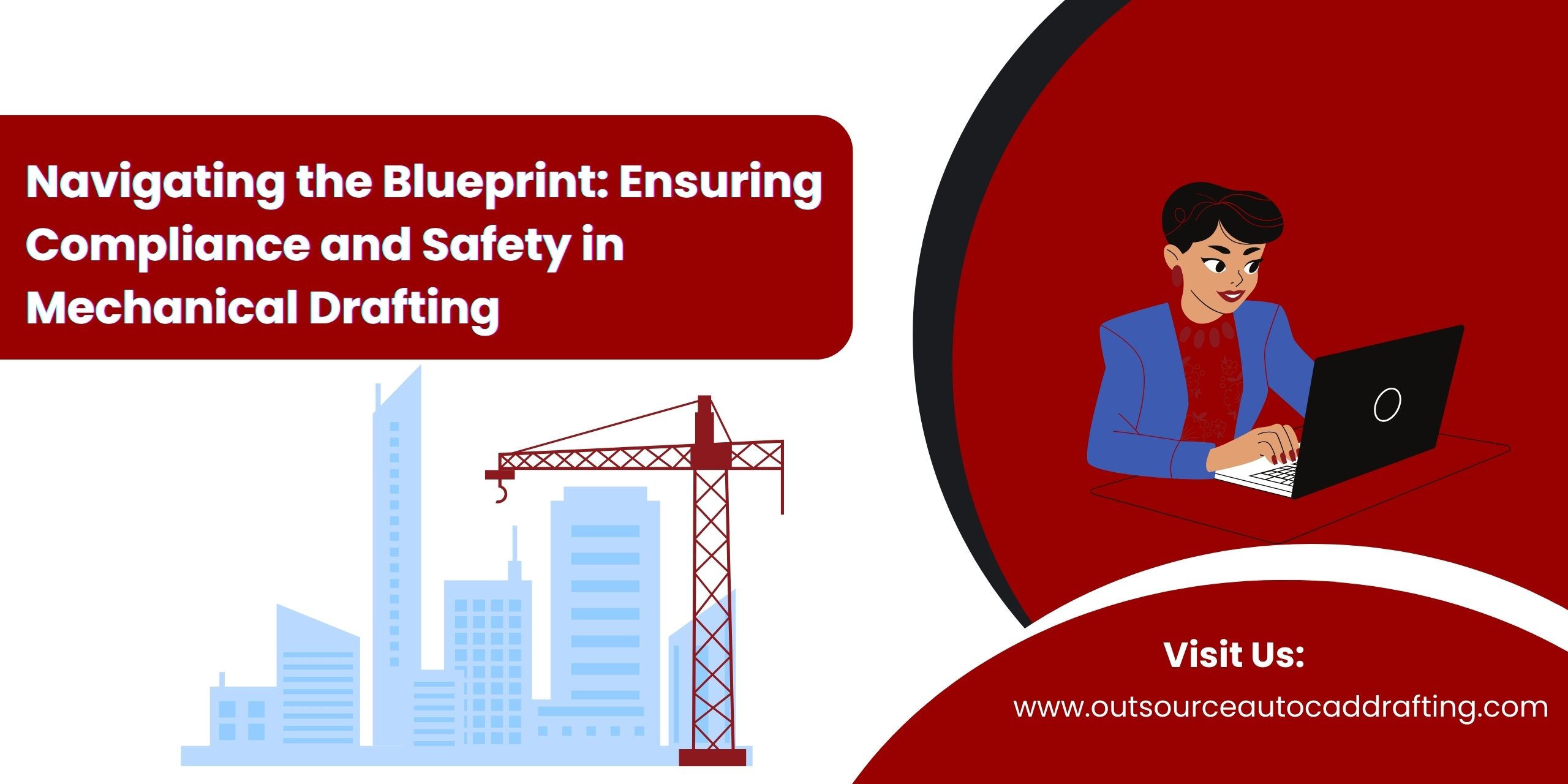In the world of mechanical drafting, precision is paramount. From skyscrapers that touch the heavens to the tiniest of microchips powering our devices, mechanical drafting forms the blueprint of modern engineering marvels. However, the beauty of these designs goes beyond aesthetics; it hinges on adherence to industry regulations and safety standards. In this blog post, we delve into the critical importance of ensuring compliance and safety in mechanical drafting projects, backed by industry statistics and facts.
Why Compliance Matters
Legal Compliance: Mechanical drafting isn’t just about lines and numbers; it’s a legal requirement. Industry standards, local building codes, and national regulations dictate the form and function of mechanical systems. Failure to comply can result in fines, delays, or even project shutdowns.
Safety First: Safety isn’t an option; it’s a necessity. Mechanical systems that don’t meet safety standards can lead to catastrophic failures. According to the U.S. Bureau of Labor Statistics, mechanical failures account for 12% of all workplace fatalities. Compliance saves lives.
Quality Assurance: Compliance ensures the quality of your design. It’s your assurance that the mechanical systems you draft will perform as intended. Without compliance, you risk subpar performance, costly rework, and damage to your reputation.
The Cost of Non-Compliance
Non-compliance in mechanical drafting can be financially and ethically devastating. Let’s look at some startling statistics:
Financial Loss: According to a report by the Construction Industry Institute, non-compliance issues can add up to 10% to a project’s cost. For a multimillion-dollar project, that’s a staggering sum.
Project Delays: The same report indicates that non-compliance can extend project schedules by up to 20%. Time is money in the construction industry, and delays can lead to missed deadlines and lost opportunities.
Reputation Damage: Word of a poorly executed project spreads fast. Clients, contractors, and regulatory bodies take note of non-compliance. Your reputation may never fully recover.
Best Practices for Compliance and Safety in Mechanical Drafting
Stay Informed: Regulations and safety standards evolve. Make it a habit to stay updated on the latest changes. Attend industry seminars, read journals, and participate in professional organizations.
Document Everything: Detailed documentation is your shield. Keep records of design decisions, calculations, and compliance checks. This not only aids in project management but also serves as a trail of your commitment to compliance.
Collaborate Effectively: Mechanical drafting is rarely a one-person show. Collaborate with engineers, architects, and other stakeholders to ensure all aspects of compliance and safety are covered.
Invest in Tools: Utilize state-of-the-art drafting software. These tools often come with compliance checks built-in, making it easier to spot potential issues early in the design phase.
Quality Assurance Reviews: Regularly conduct internal reviews to check for compliance and safety. Catching and rectifying issues internally is far more cost-effective than dealing with them in the field.
Training and Certification: Invest in your team’s training and certification. Knowledgeable staff is your first line of defense against compliance issues.
Engage Consultants: Sometimes, it’s wise to bring in external consultants who specialize in compliance and safety. Their expertise can be invaluable in complex projects.
Mechanical drafting is more than lines on paper; it’s about ensuring the safety, quality, and compliance of the systems that power our world. As industry regulations become more stringent, the role of compliance in drafting projects cannot be overstated. By adhering to best practices, staying informed, and investing in quality, you not only protect your projects but also your reputation in the competitive world of mechanical drafting.

